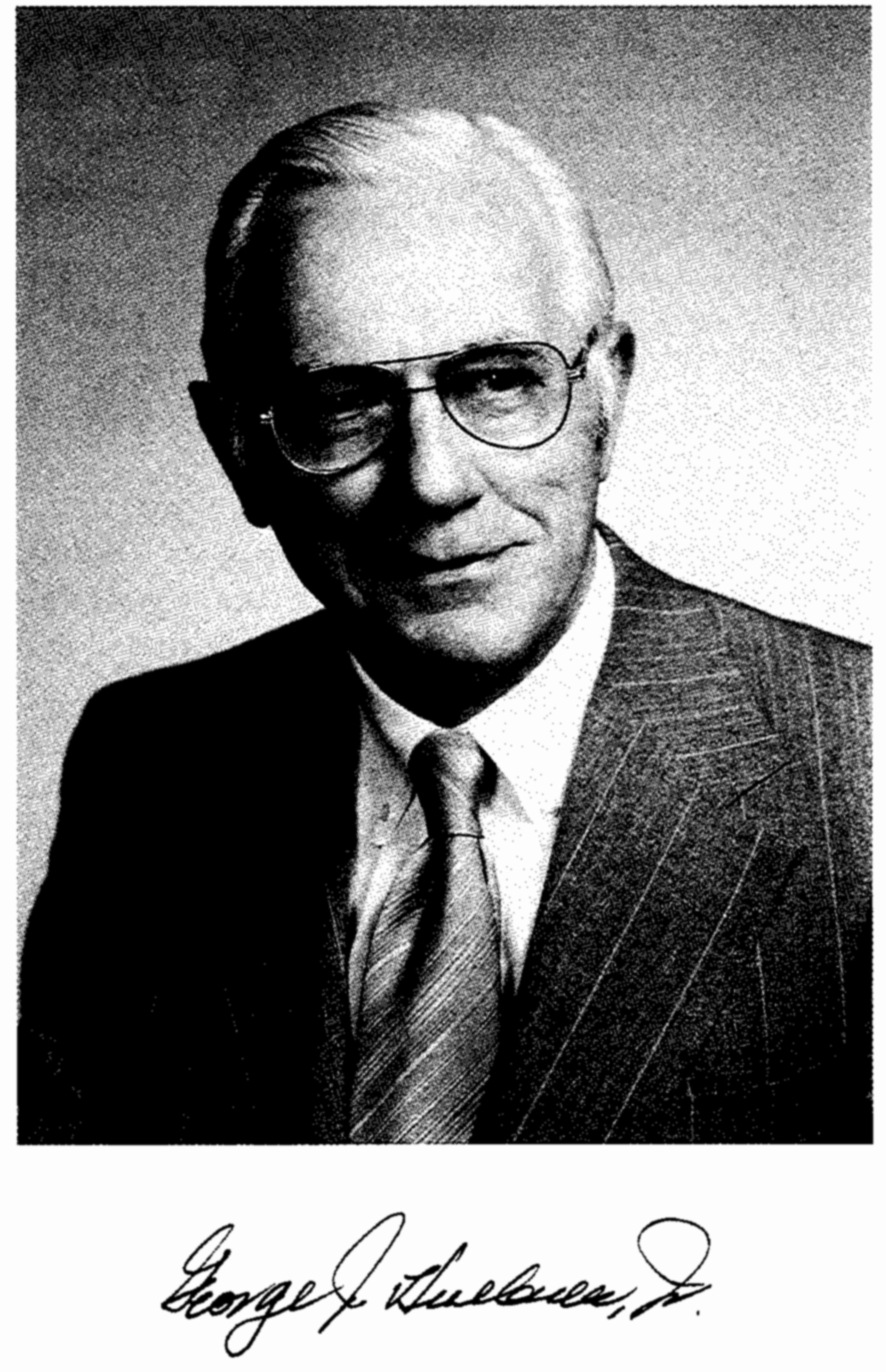Page 125
JOE ESTES HOUSE
1923–1998
BY R. RAY BEEBE
AT THE TIME OF HIS DEATH on May 1, 1998, Joe House had been retired as vice-president of Henkel Corporation's Mineral Industry Division for nearly twelve years, yet he still stood at the pinnacle of his field, solvent extraction, consulting for mining and chemical companies throughout the world. Solvent extraction of metals was literally “a multimillion-dollar global business built from an idea,” as Joe himself once characterized it.
Joe House was born in Newtonia, Missouri, and received his primary and secondary education in Missouri and California. He earned A.B. and B.S. degrees in chemistry from Southwest Missouri State University, an M.S. degree from the University of Oklahoma, also in chemistry, and an MBA degree from Washington University in St. Louis. From 1947 until 1956 Joe taught chemistry at secondary and college levels, and in 1956 he joined the research and development department of General Mills Chemical Company. He was destined to spend the next thirty years with that company and its successor, Henkel Corporation. He was assigned to work on development of mining chemicals and almost immediately introduced new amine reagents for nonmetallic flotation. In 1958 he synthesized the first tertiary amine for uranium extraction and participated in its commercialization: soon this regeant accounted for some 85 percent of Free World uranium production. In 1960 Joe introduced an extractant that could be used in alkaline circuits for vanadium,
Page 126
molybdenum, and tungsten, and in that same year began work on a completely new concept: the solvent extraction of copper.
Joe House's work on copper over the next several years captures his unique combination of inspired technical expertise and down-to-earth business sense. Before 1963 several copper producers and reagent manufacturers had tried and failed to apply the then-common technique of resin-based ion exchange to inplant waste streams and leach solutions from low-grade oxide ores. Joe House translated his chemical knowledge into a vision that persuaded his employers to back development work that required the utmost ingenuity, since the reagents required did not then exist. Joe's perseverance succeeded not only in the laboratory, but also in a long up-hill struggle to gain acceptance for solvent extraction and electrowinning (SXEW) as a tool for the copper industry to lower costs and make use of ore reserves too small to justify investment in conventional smelters and refineries.
It took four years, but in 1968 a small company, Ranchers Exploration and Development, built a modest plant in Arizona at a mine whose name became legendary: Bluebird. The following year a somewhat larger company, Cyprus Minerals, built a plant at its Bagdad mine, also in Arizona. Both plants used a General Mills reagent named LIX-64. “LIX” stood for “liquid ion exchange” and 64 for the year it was offered for sale: the name had been copyrighted for General Mills by Joe House, and the nomenclature was used for successor formulations for many years. Even so, the larger U.S. copper companies still shied away from SXEW, leading Joe and his colleagues to Zambia, where they established the largest SXEW plant in the world! By then Joe House was vice-president of General Mills Chemicals, and he and his fellow engineers continued to improve the LIX reagents, not only to make them more efficient for copper, but also to adapt variants to recovery of other metals. SXEW was gradually adopted by the world's biggest copper companies, and by the early 1980s its products were generally recognized to be at least as good as—and sometimes better than—conventionally electrorefined copper. Several years before this, Joe House had assumed responsibility for all international LIX research and
Page 127
development, in addition to production, sales, and services.
In 1977 Henkel (Germany) bought General Mills Chemicals' mining chemicals business, and in 1982 Joe House helped arrange acquisition of Shell Chemicals' oxime technology for a new family of extractants. Having overseen the establishment of a new mining chemicals plant in Cork, Ireland, Joe was being urged to relocate to Henkel's headquarters in Germany. He chose to remain at his long-time family home near Minneapolis, and so retired from Henkel in 1986, only to find he was in immediate demand as a consultant. Joe, often accompanied by his beloved wife, Marydella, traveled the world, but somehow seemed to get to London for the theater season most years. He still consulted for Henkel, but he was scrupulous in avoiding conflicts of interest with his other clients.
During his career Joe House won too many awards to be listed here, but the common thread that ran through many citations was the word “perseverance.” He was certainly perseverant, but he was also unfailingly generous in giving credit to his colleagues and, as I learned, even his friends. One night in Washington, D.C., after a National Academy of Engineering meeting, he said he intended to take me to dinner. We had an excellent repast at the Willard, and I asked what the occasion might be. Joe said, “When we first met in Minneapolis in the early 1960s, I told you about my troubles with the copper reagent. You encouraged me at a time when I really needed encouragement.” Coming from Joe, that was my greatest compliment!





